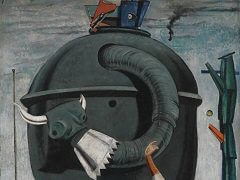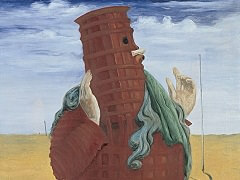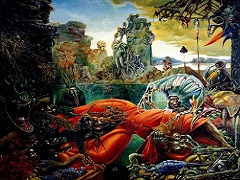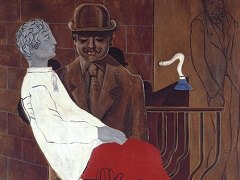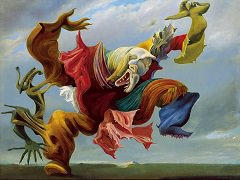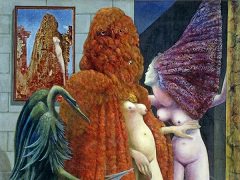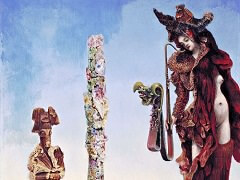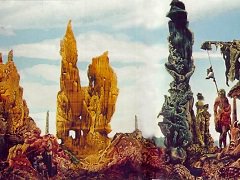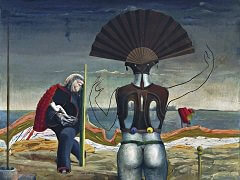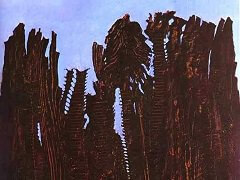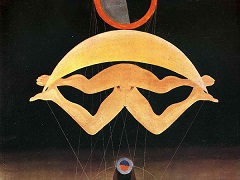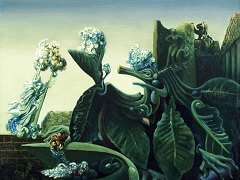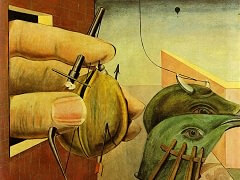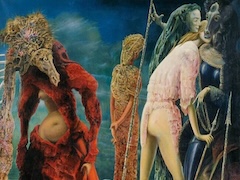The Hat Makes the Man, 1920 - by Max Ernst
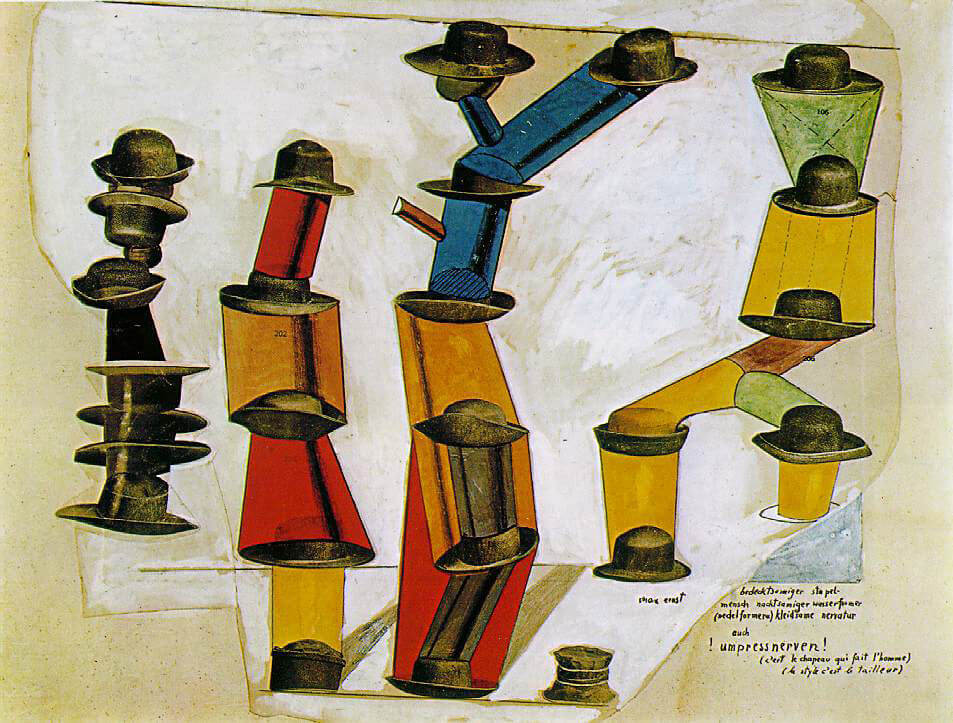
To make The Hat Makes the Man, Max Ernst cut, pasted, and stacked images of men's hats clipped from a sales catalog. The suggestively phallic towers and tongue-in-cheek title inscribed on the work, "C'est le chapeau qui fait l'homme" ("The Hat Makes the Man, 1920") were likely inspired by book The Joke and It's Relation to the Unconscious of Sigmund Freud, in which the famed psychoanalyst identified the hat - a requisite accessory for bourgeois men - as a symbol for repressed desire. The visual pun adds a new, bawdy spin to the cliché.
In this work and many others, Ernst clipped illustrations from advertisements or articles, arranged them partially by chance, and then drew or painted around his absurd configurations. "These changes," Ernst recalled, were "reproductions of what was within me, recorded a faithful and fixed image of my hallucination. They transformed the banal pages of advertisement into dramas that revealed my most secret desires."

